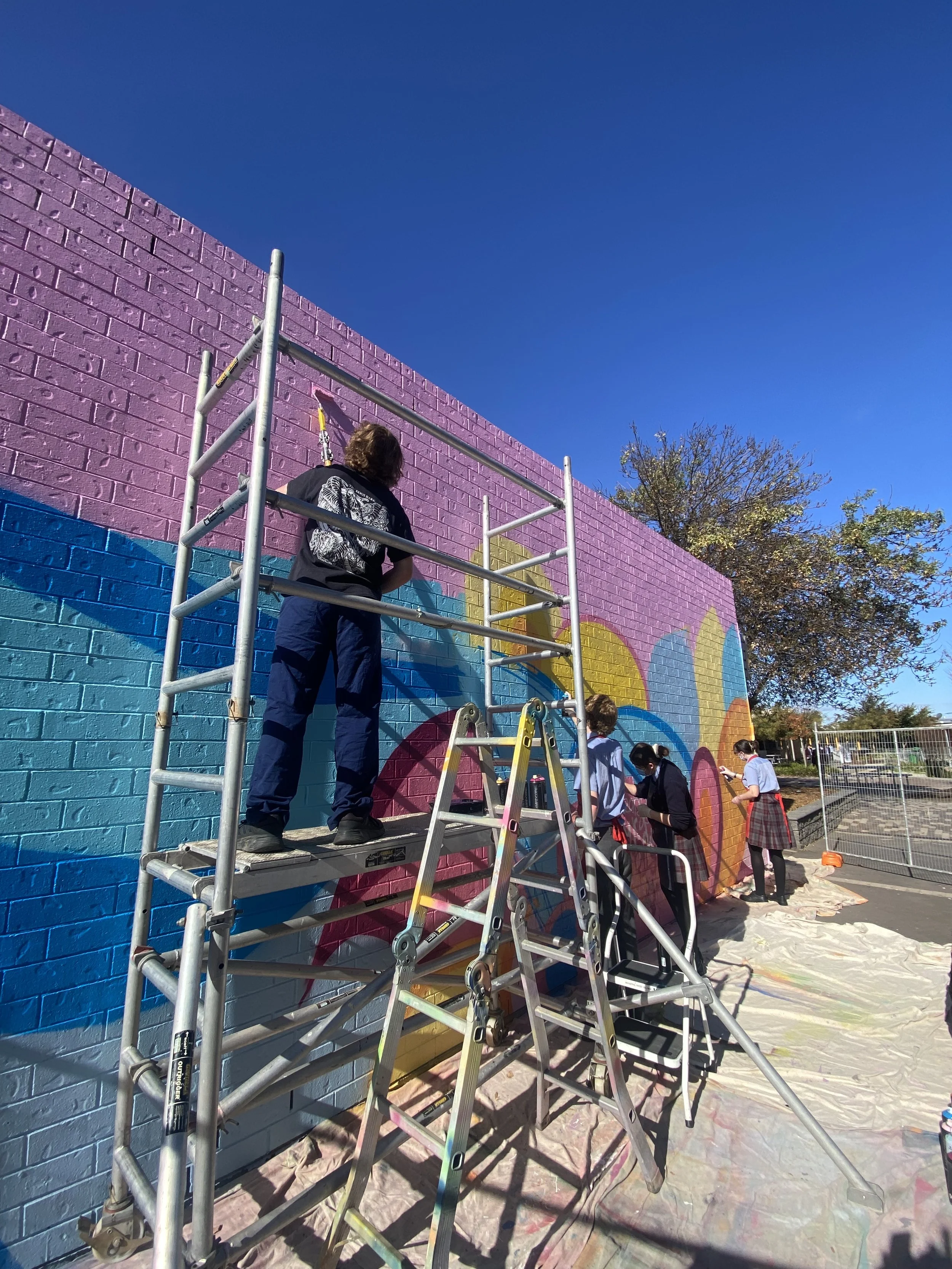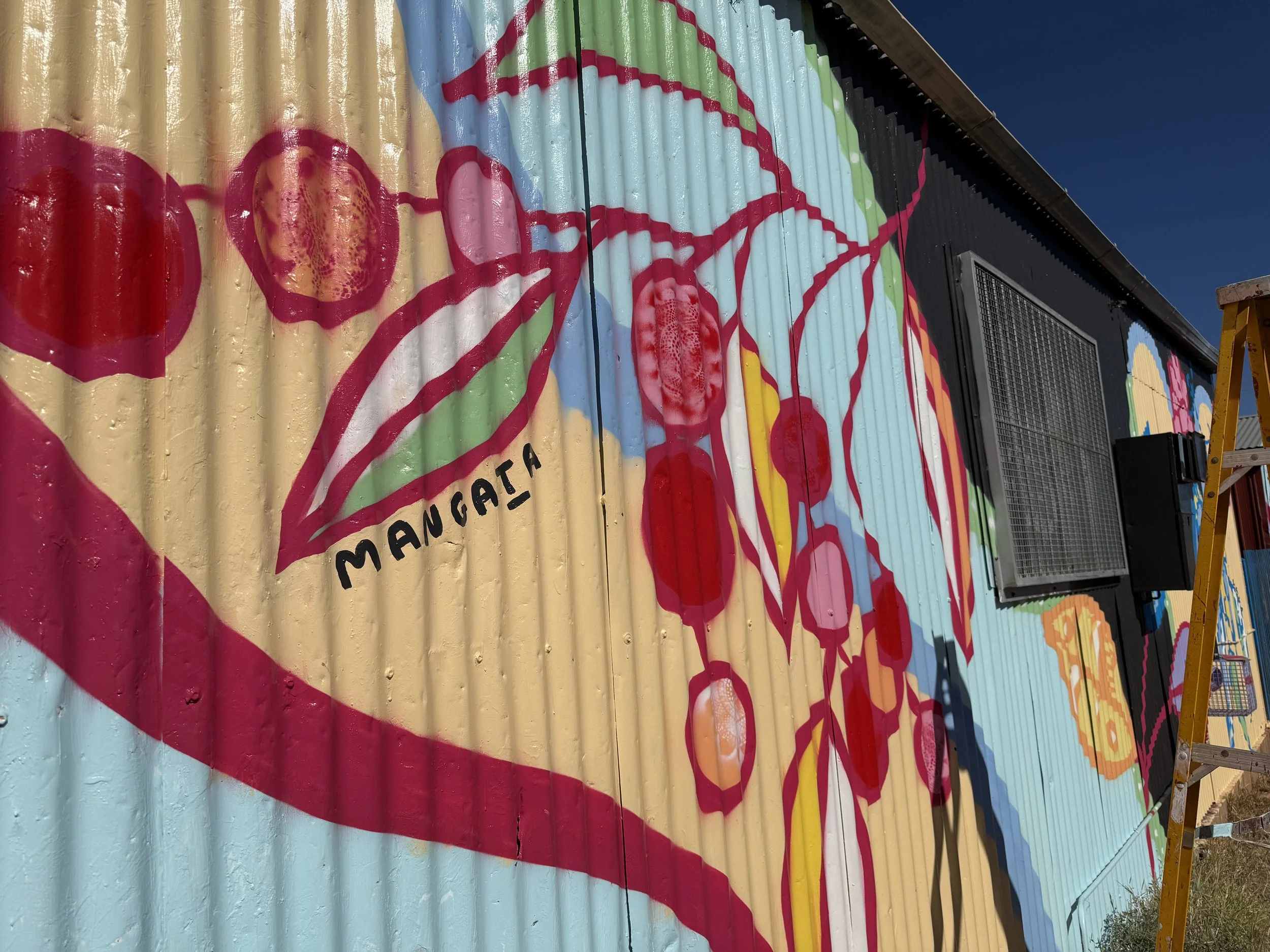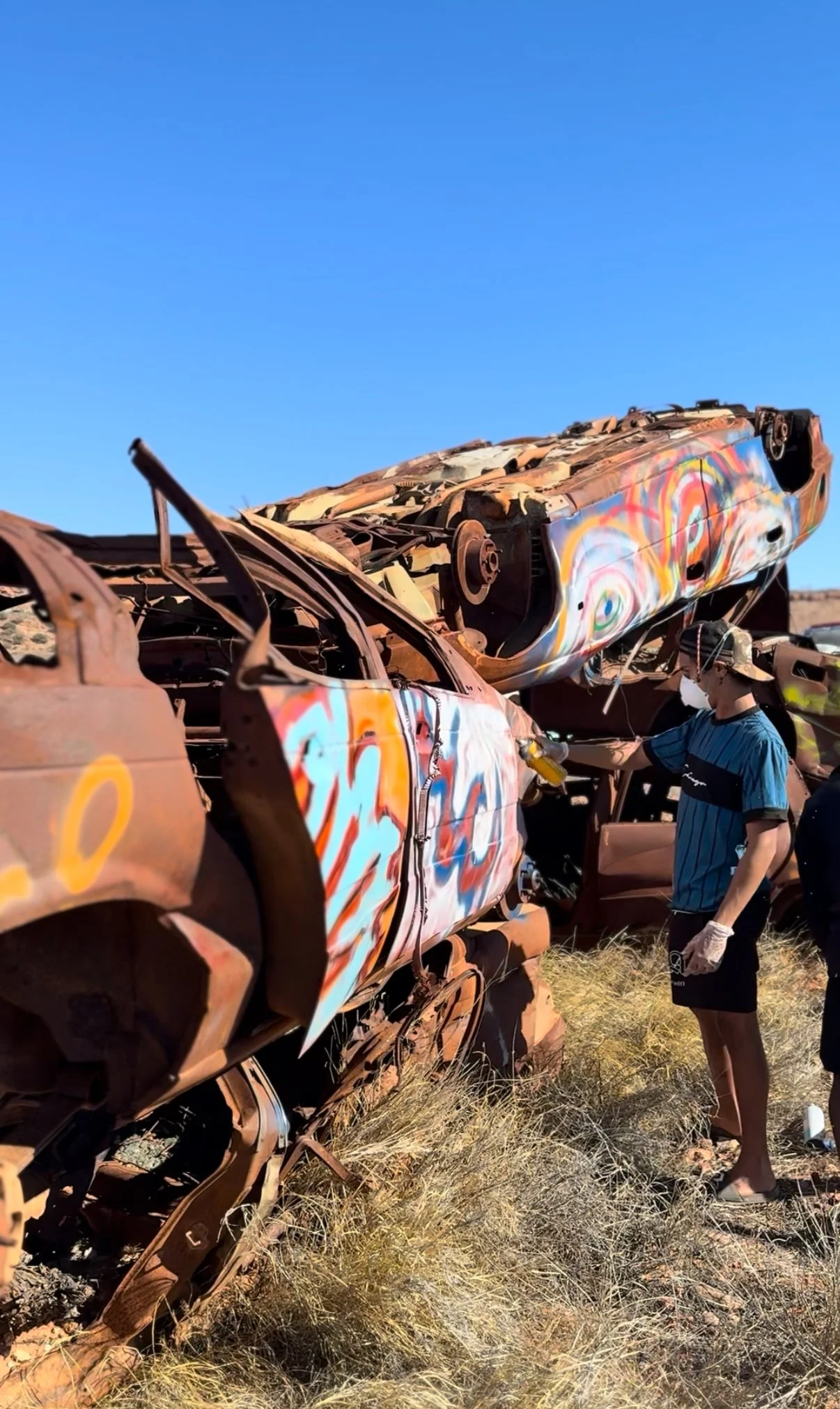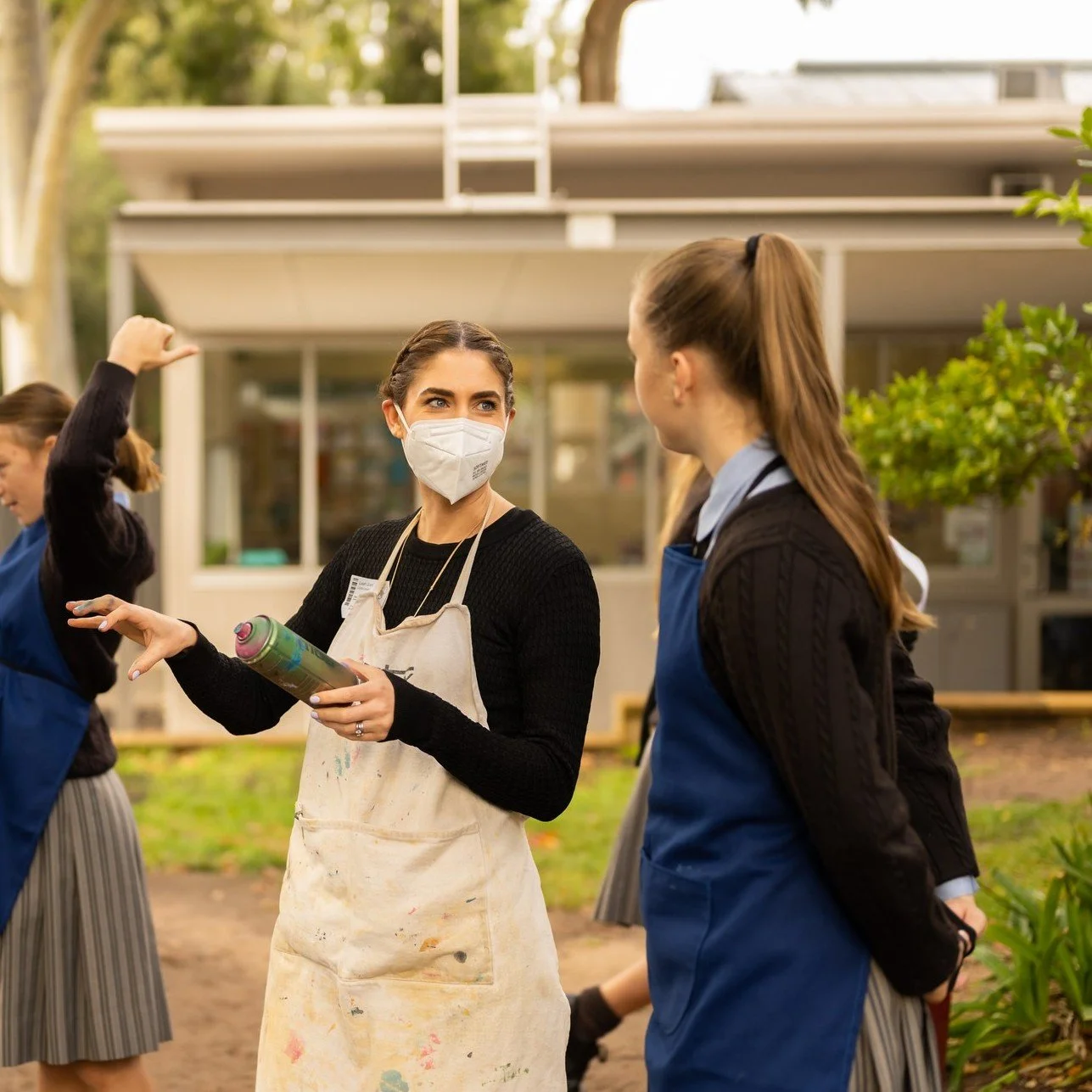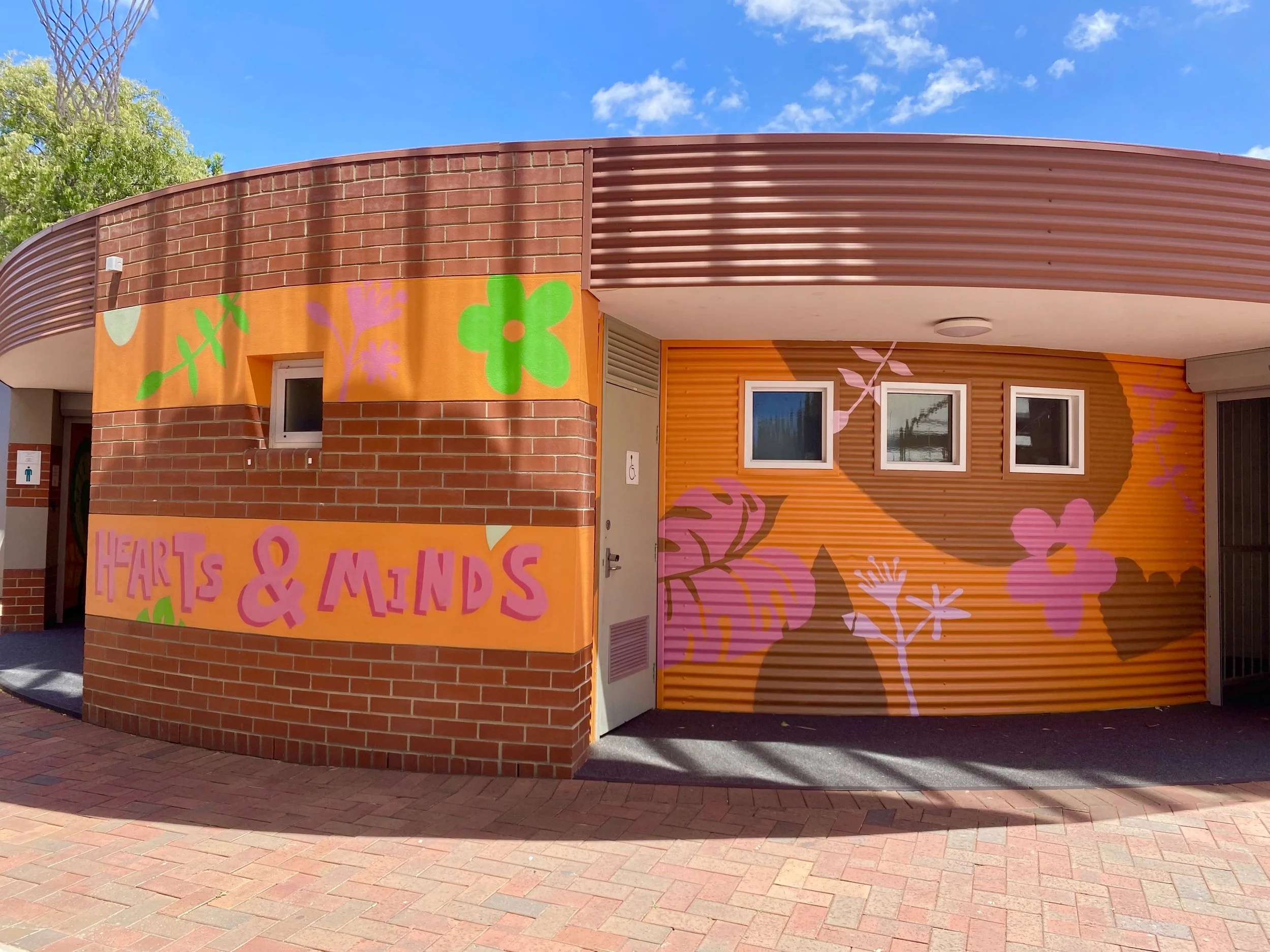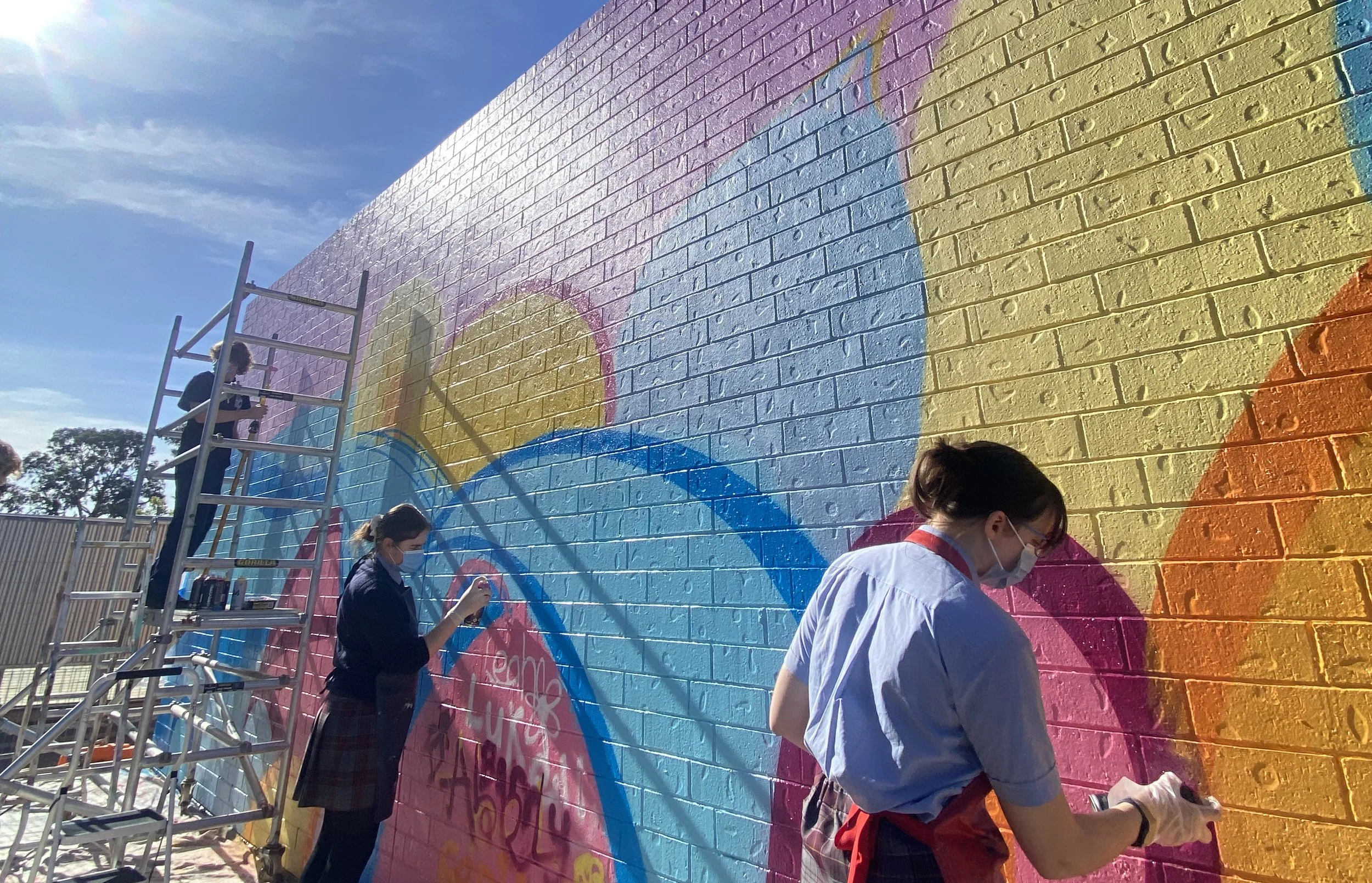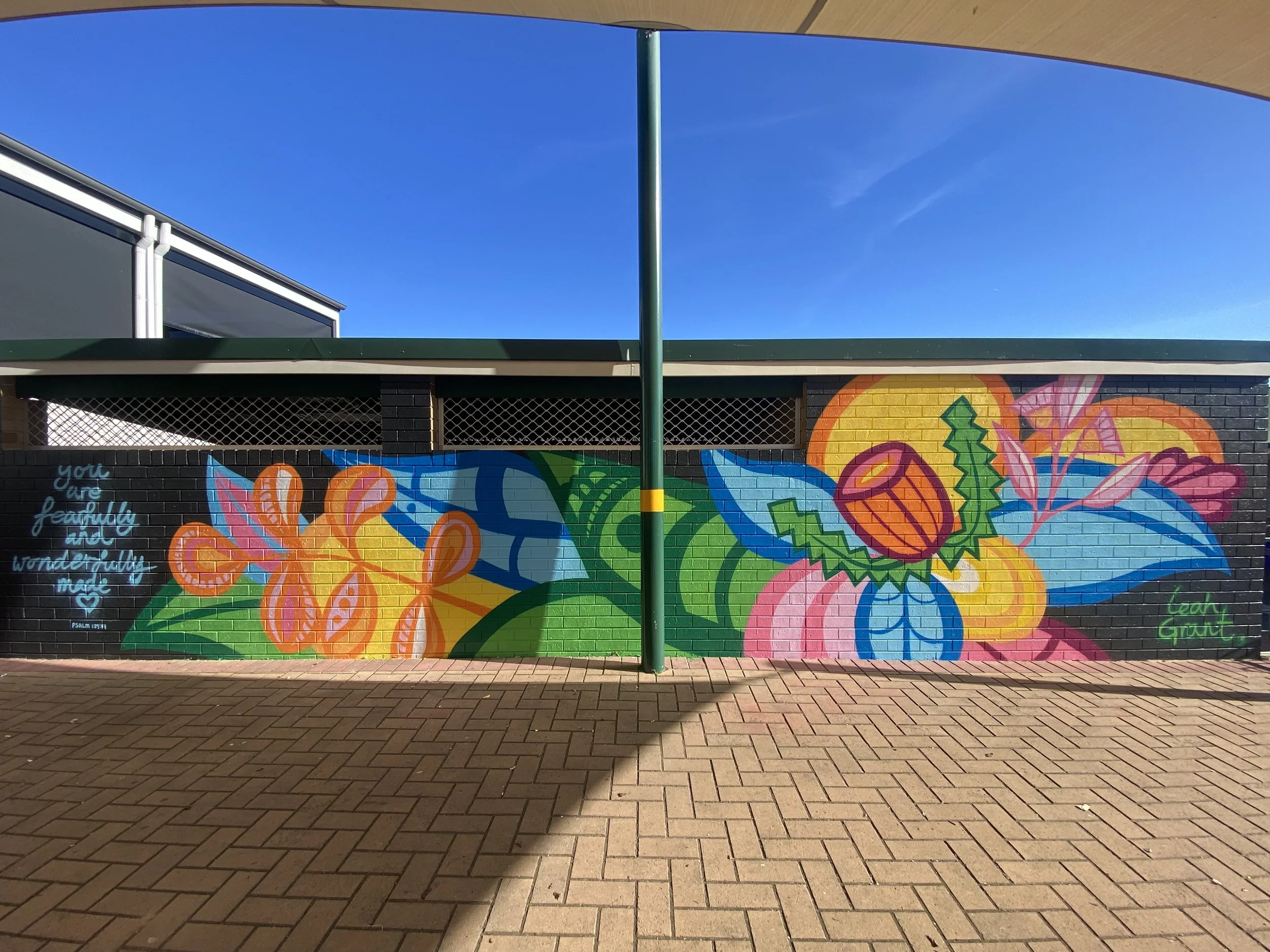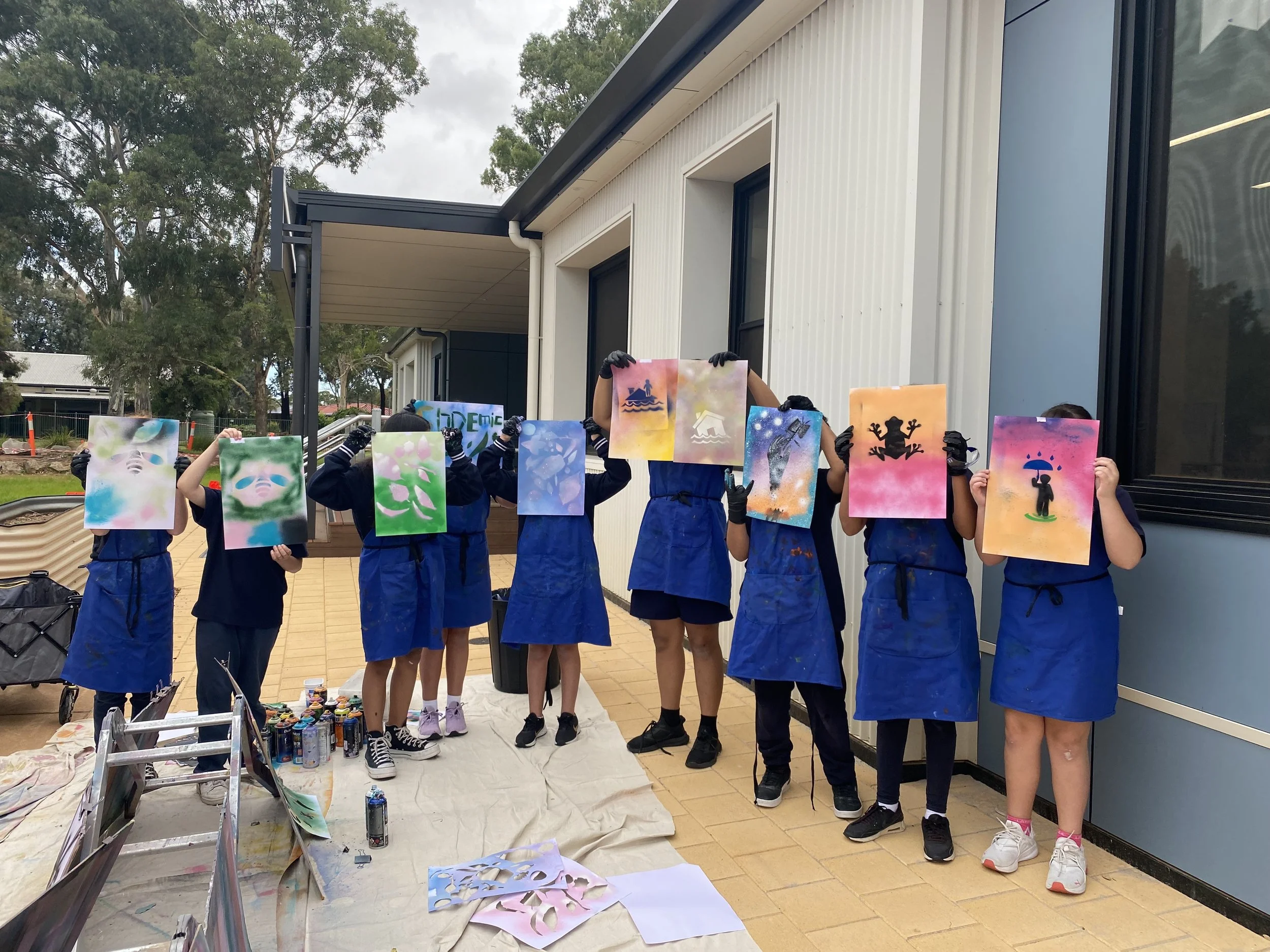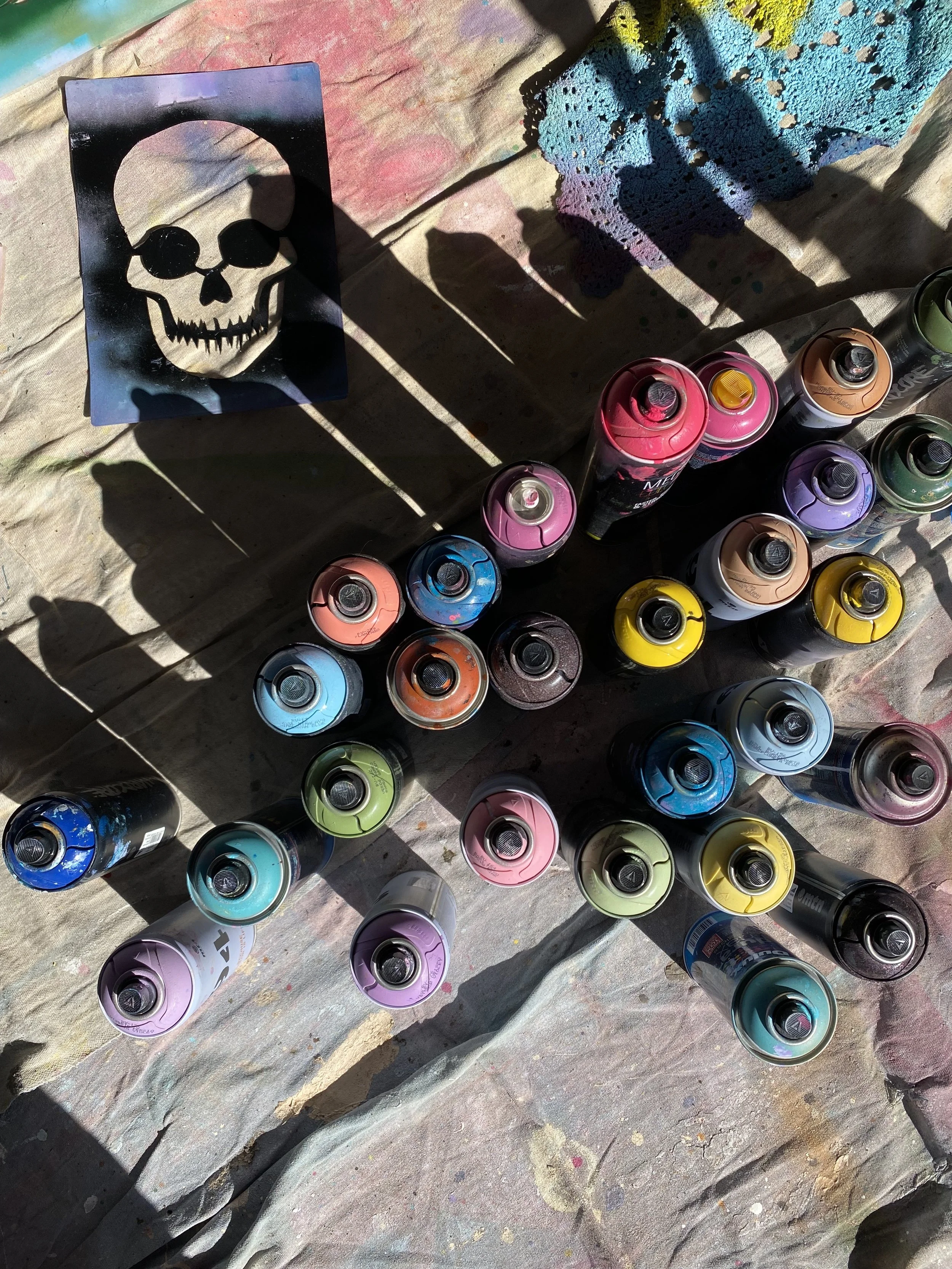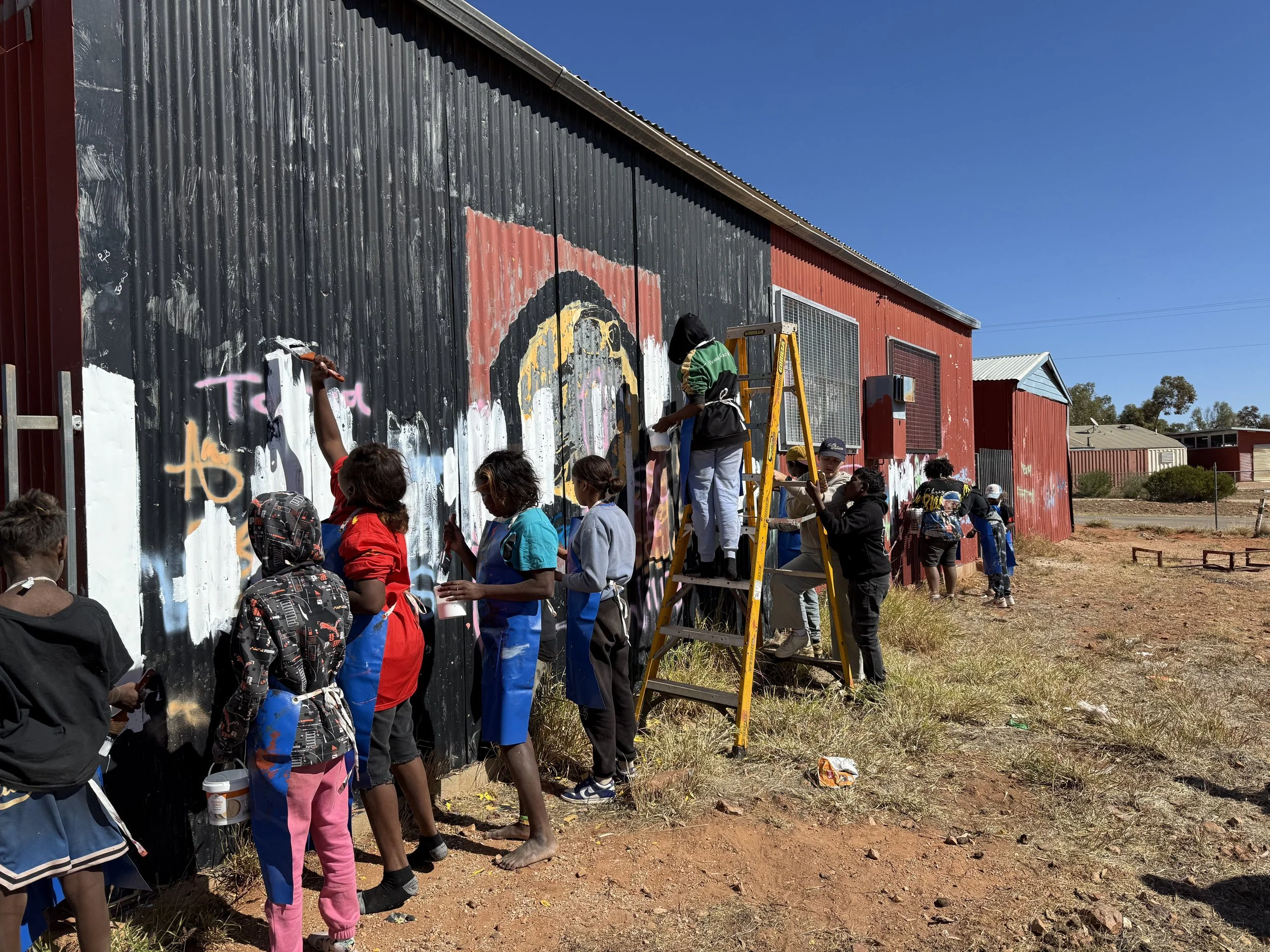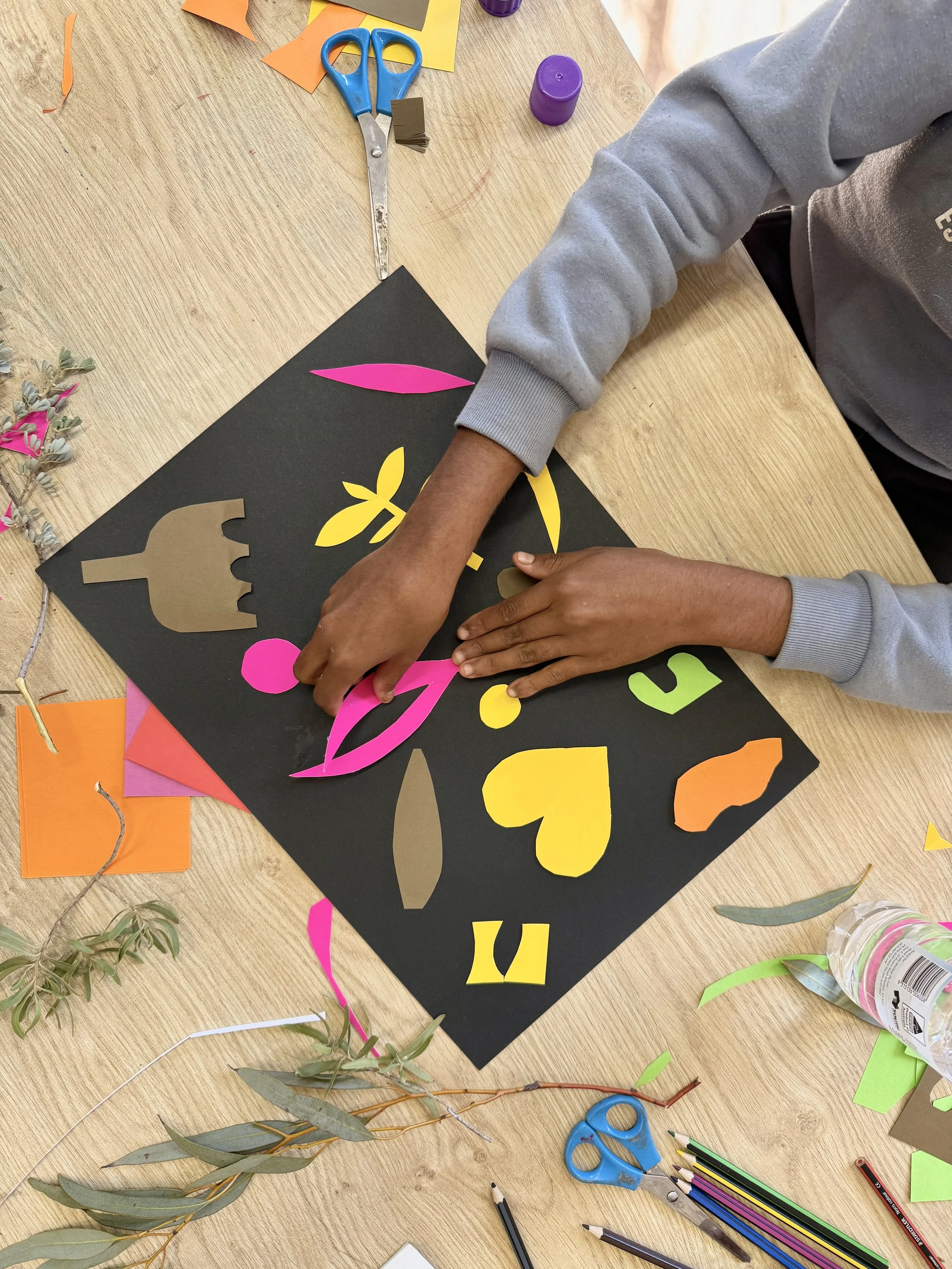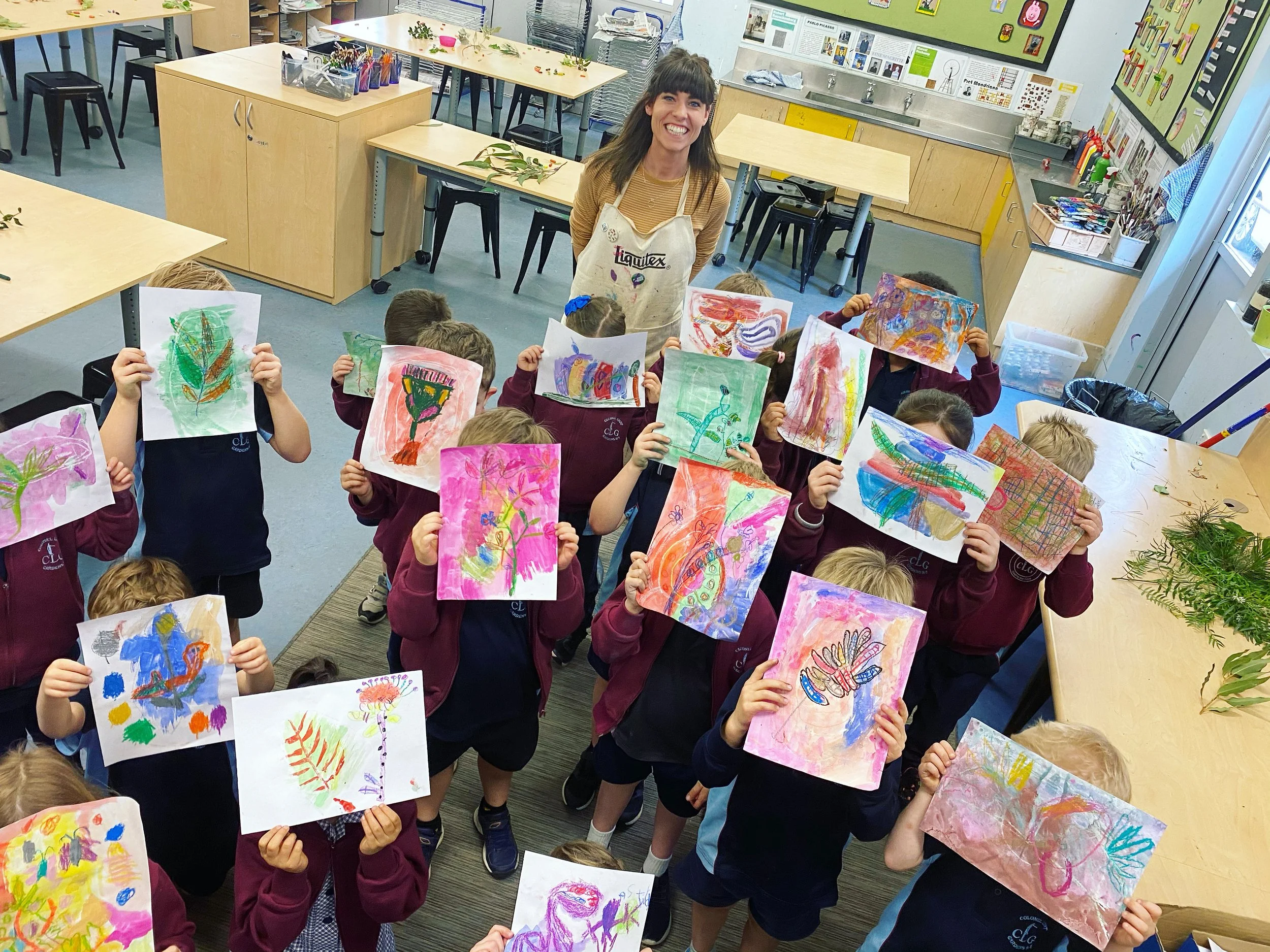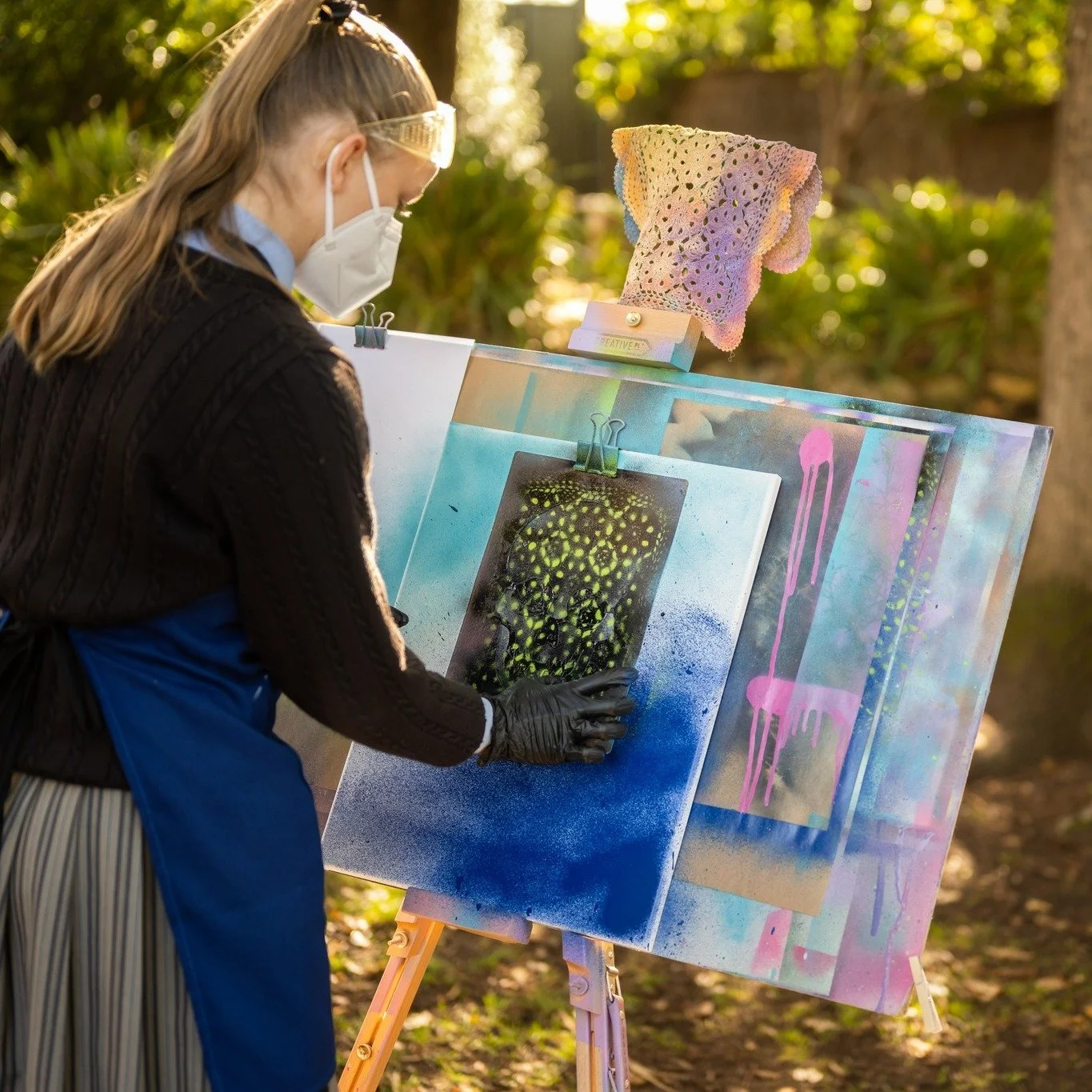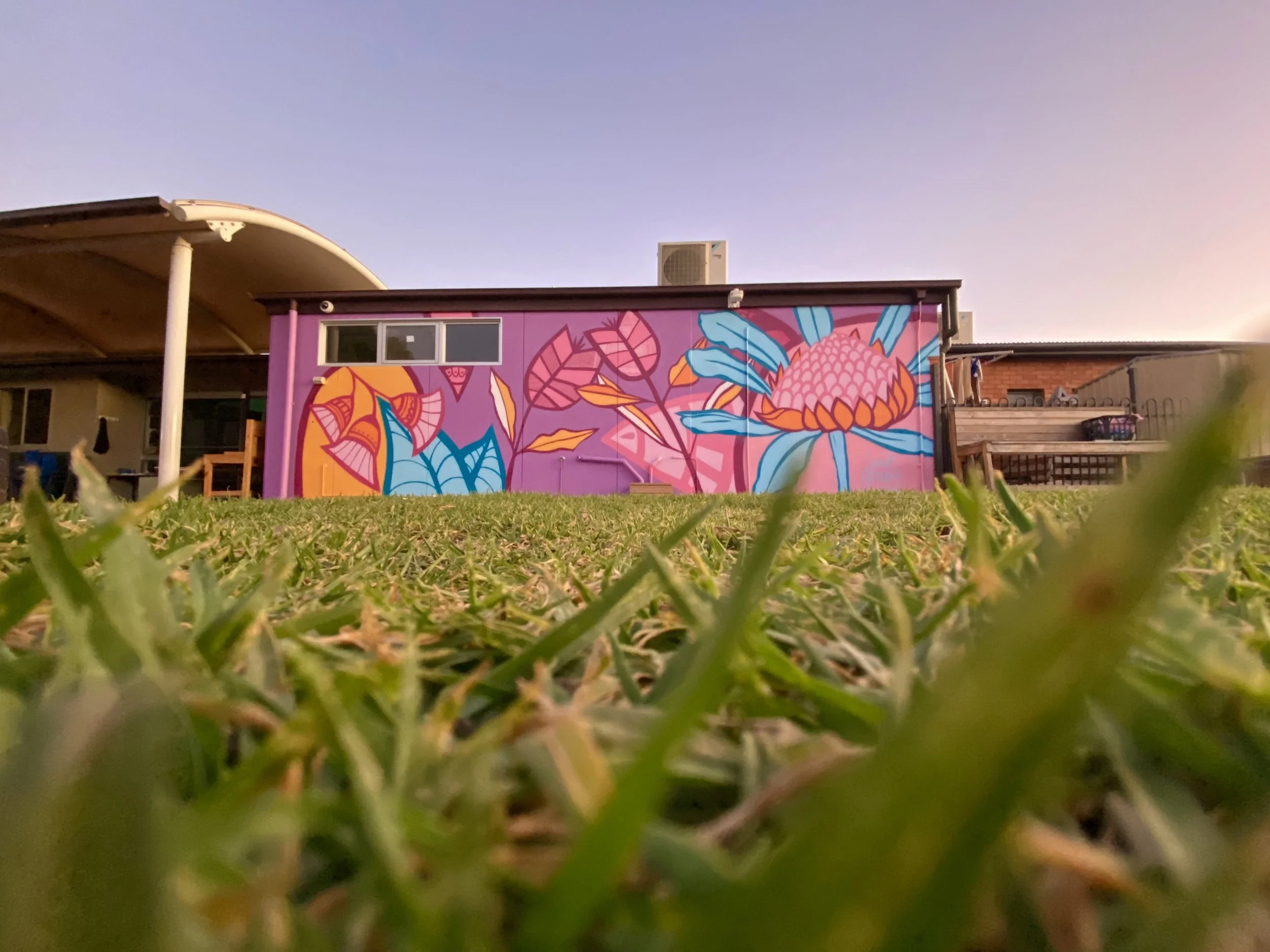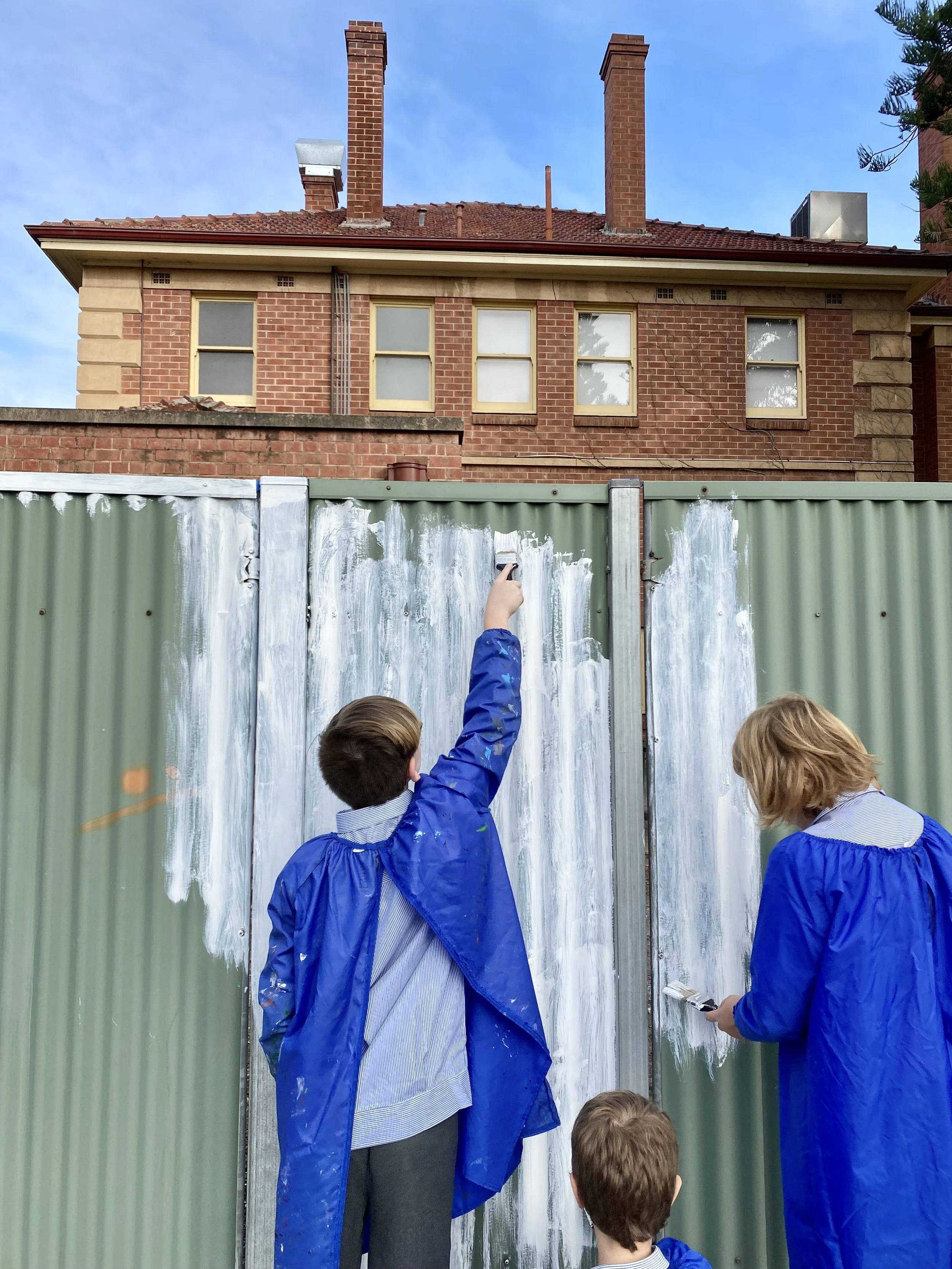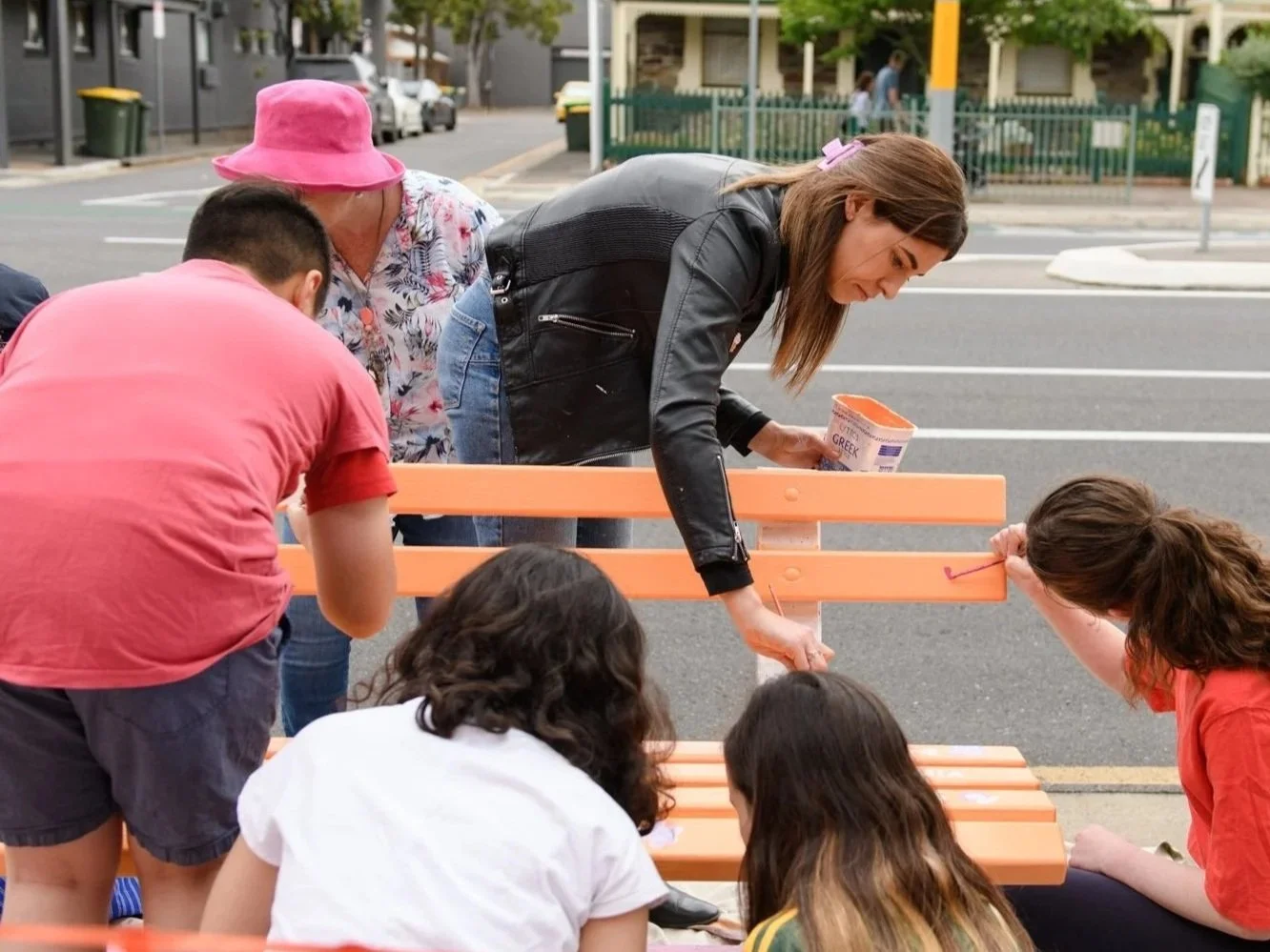What is an Artist in Residence?
An artist in residence is when an artist and an organisation arrange for the artist to spend a set period of time working within that organisation.
The key to a successful residency is that it benefits both the artist and the organisation. This mutual value makes it authentic, sustainable, and impactful.
My Experience as an Artist in Residence
I’ve visited over 30 schools across Australia as an artist in residence. Each residency has been different in length, structure, and focus.
Some have included:
Workshops with students or staff
Artist talks, sharing my process and practice
Q&A sessions for curious minds
Collaborative mural design
Mural installation
The approach depends on the school’s goals, curriculum, and how I can best support student learning.
During a residency, I’m paid for my time and materials, and I also have access to the organisation’s resources and support. These experiences extend my portfolio, allow me to experiment, and help me further develop my style, growth that stays with me long after the project ends.
Benefits for Schools and Organisations
The benefits of a residency reach far beyond the final artwork.
I began working in schools because I’m passionate about students seeing that the arts can be a sustainable career path, and about raising the value society places on creativity.
When I was in high school, I thought my only options were:
Become a struggling artist (like van Gogh, minus the ear incident!)
Become an art teacher and create on the side
That was all I saw modelled for me. Bringing industry professionals into schools shifts that mindset. Students see that creativity can be valuable, fulfilling, and financially viable.
Residencies also:
Broaden the range of art styles and techniques students are exposed to
Enable authentic collaboration
Inject excitement and energy into the school or community
How Much Should an Artist Be Paid?
Payment depends on factors such as:
Length of residency
Artist’s experience level
Size and budget of the organisation
The National Association for the Visual Arts (NAVA) provides recommended pricing and a code of practice to support sustainable arts careers.
Example rates from my own residencies:
Indulkana Anangu School: $6,200 for a one-week residency. This included flights, accommodation, travel costs, and six months of planning, grant writing, and virtual meetings with staff. The materials were purchased directly by the school.
Cardijn College: $7200 for a workshop with students, mural installation and materials.
Payment isn’t always purely financial, sometimes it includes materials, travel, or accommodation. The important thing is that both parties walk away with more than they came in with, whether that’s skills, knowledge, or a new mural.
Residency Highlight: Indulkana Anangu School
One of my most memorable residencies was in the APY Lands at Indulkana Anangu School.
This project was unique because I arrived without a mural plan. We wanted the design to be developed authentically with the students. After flying into Alice Springs, I travelled four hours south to the Indigenous community with Zoe Ingoldby-Craig, the art teacher.
Over a week, we worked together to design and paint a mural on the back of the art room. The aim was to improve wellbeing and student attendance and the cultural exchange had a huge impact on me. The dedication and passion of educators working remotely in Australia is something I deeply respect.
How to Find the Right Artist for Your Residency
It starts with a conversation. The clearer you are about your purpose, the easier it is to find the right fit.
Possible purposes:
Focus on a specific medium (e.g. mural painting, ceramics, oil painting)
Wellbeing (building resilience, encouraging creative risk-taking)
Sustainable careers (showing real-life creative pathways)
Skill-sharing for teachers (upskilling in new techniques or mediums)
Artist recommendations:
Brentos – If you want an artist who has collaborated with big brands, paints native Australian animals and is passionate about sharing his experience with finding his style I can’t recommend Brent enough! He can paint a mural at your school and share how he has been self taught and built a brand that maintains his style and passion.
Dave Atze – If you’re looking for an artist who is an author and illustrator and bursting with creative passion on how to move past creative block, then I highly recommend Dave. He can run workshops, paint murals and share about his books and experience as a freelance artist.
Me – If you want an artist who is a Christian, makes walls colourful and inspiring, can share about her experience as a street artist and public art, then I’m your girl! I can install murals, run workshops and teach the students to paint their own mural.
Practical Considerations
Working With Children Checks:
Your chosen artist must have the required police checks and Working With Children Check permissions. I also have VIT registration and 10 years of classroom teaching experience. I am careful that when I visit as an artist, my role is not behaviour management or curriculum planning. My role is to build relationships with the staff and students and support the learning. Answering questions, sharing my experience and knowledge. I work alongside the teachers who know the procedure and policies of their school.
Comfortable with Public Speaking:
Ideally, your artist should be confident presenting to a class or even a whole assembly. That said, it’s a skill artists can grow into, I was nervous in my first residency too!
“Making the residency highly collaborative results in a stronger program, builds trusting relationships between staff and the artist, and ultimately benefits students.”
Residency Checklist
Price: What’s your budget?
Purpose: What do you want the residency to achieve?
Focus: Skill development, wellbeing, career pathways, or a combination?
Medium: aerosol, ceramics, sculpture, oil painting, etc.
Experience level: Do you want to support an emerging artist or bring in an established one?
Clearances: Does the artist have (or can they obtain) the necessary checks?
Artist residencies can inspire creativity, foster collaboration, and leave a lasting impact on both artists and communities.
If you’re interested in hosting me, or would like consultation for how to develop an artist in residency program at your school, let’s start the conversation.
“I highly recommend engaging Leah Grant as an artist for your school. Her professional approach, combined with a fun and collaborative approach, made the entire process seamless and enjoyable. ”
“The students loved having an artist of Leah’s calibre be so generous with her knowledge and encouragement.”
“Students grew in confidence and were inspired by this residency experience. Students and staff worked together, building competencies in communication, group work, developing leadership skills, and creative thinking.”
Three Keys to Creative Education
How can we bring more colour, collaboration, and creativity into schools?
How to make an Artist in Residence Successful in Schools
Interview with Brooke Porter.





